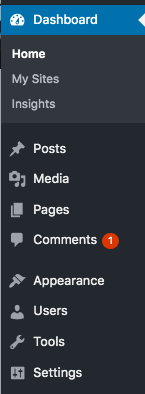If you haven’t read the course essentials post, which contains a link to the course outline as well as important course and time management information, please do so before reading this post. (I suspect you’ve all read it by this point, just checking …) Also, a reminder that your third assignment, feedback on your classmates’ pre-interview and research plans, is due by 5 pm EST on Friday, July 19, as a comment on their blog post.
This week’s materials:
Guidelines: Writing Your MRP Expanded Treatment
(make sure you’re logged into your Ryerson Google account to view)
This is the last week of instructional blog posts from me until the end of August when I no doubt will be sending several reminders about your Expanded Treatment, which is due on Aug. 30 before 5 pm EST as a link to a Google Doc from a post on your individual blog. You’ll note that the course outline asks you to submit a link to the treatment to me via email. Don’t do that. The reason I’ve switched it is so that the document is easily accessible to you and your MRP supervisor and is easy to find in the Fall semester when you’re taking JN8502 MRP II: Storytelling Seminar.
You can find the Expanded Treatment guidelines here. Working on your treatment will force you to greatly clarify the themes and strategies you have developed during your research and pre-interviews. Most importantly, it will help prepare you for producing your story, which means “gathering information and conducting interviews designed to say something instead of blindly collecting stuff that you hope can be beaten into shape during the writing or editing” (Hampe, 2007).
You are strongly recommended to write several drafts of your proposal during your designated six weeks. Do not start it right before it’s due. Keep on writing and rewriting until your proposal is complete, free of redundancy and effortless to understand. A reminder that you are required to connect with your MRP supervisor – either in person or remotely – for feedback on your Expanded Treatment at least once between July 15 and Aug. 15, 2019.
You have been given more than six weeks toward the end of this course to complete your Expanded Treatment. Use your time wisely. Treatments that don’t sufficiently reflect a depth of research, reporting and analysis and offer no significant information beyond the preliminary plan will receive a failing grade. Successful completion of this course is a prerequisite for JN8502 MRP II: Storytelling Seminar in the Fall semester.
I’ll be going over the guidelines and assignment details in our next Google Hangout, scheduled for Monday, July 22 from 8-9 pm EST. Check your inbox for an invite.
Alternatively, please email me with any questions or to schedule a time to talk by phone. Over the next six weeks, I’m mostly available, though I will be unreachable the week of Aug. 4-11.
I’ll have my feedback on your research and pre-interview plans for you by next week. In the meantime, I’m sure you’re all working on your feedback for your classmates, which is due on Friday by 5 pm EST. Please make sure to check your own blog for a comment on Friday evening. Don’t edit the peer feedback, however, just approve it in the Dashboard. You can find instructions on how to do this on the last post.
Wishing you a productive and exciting rest-of-the-summer,
Asmaa

